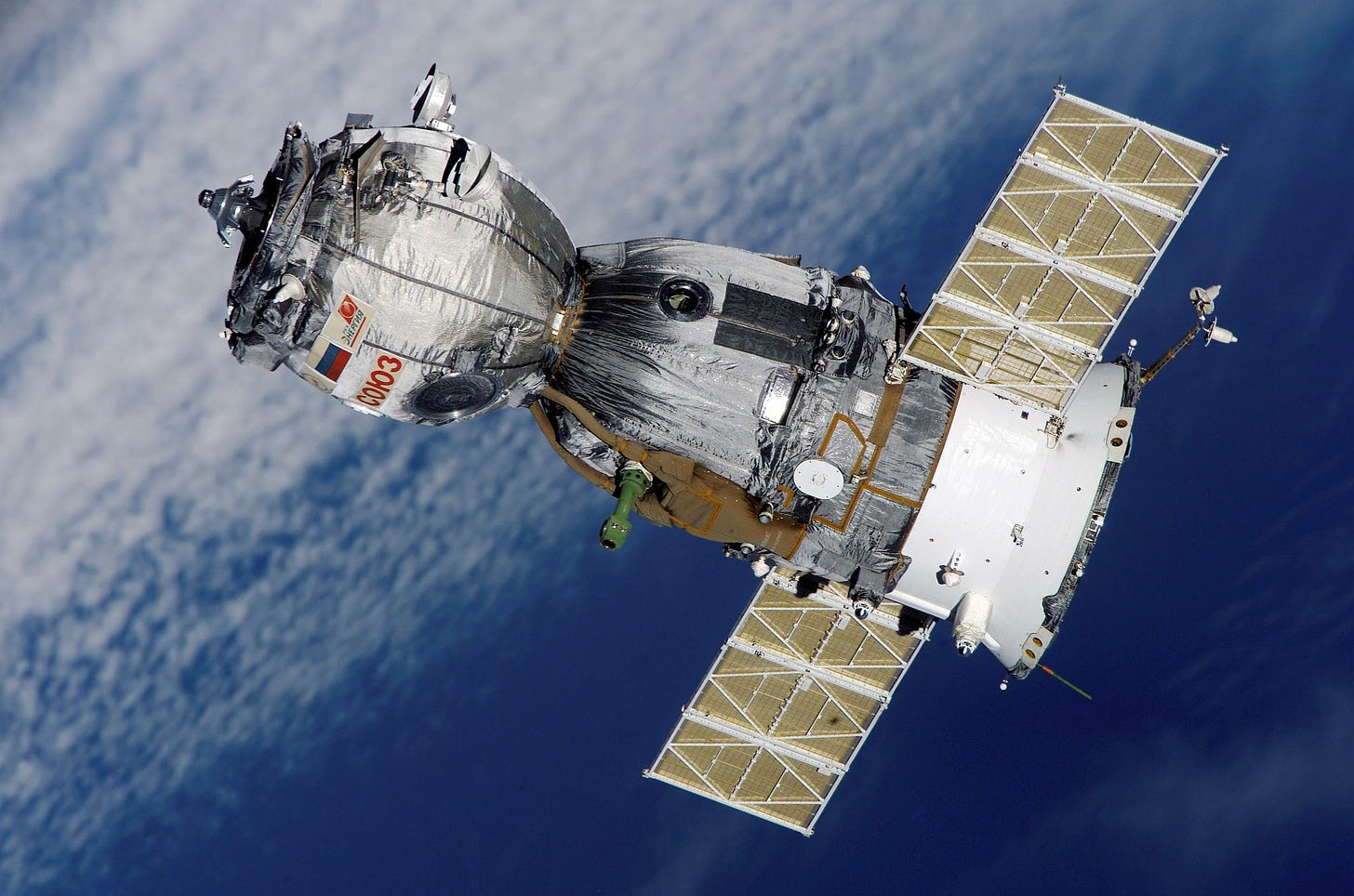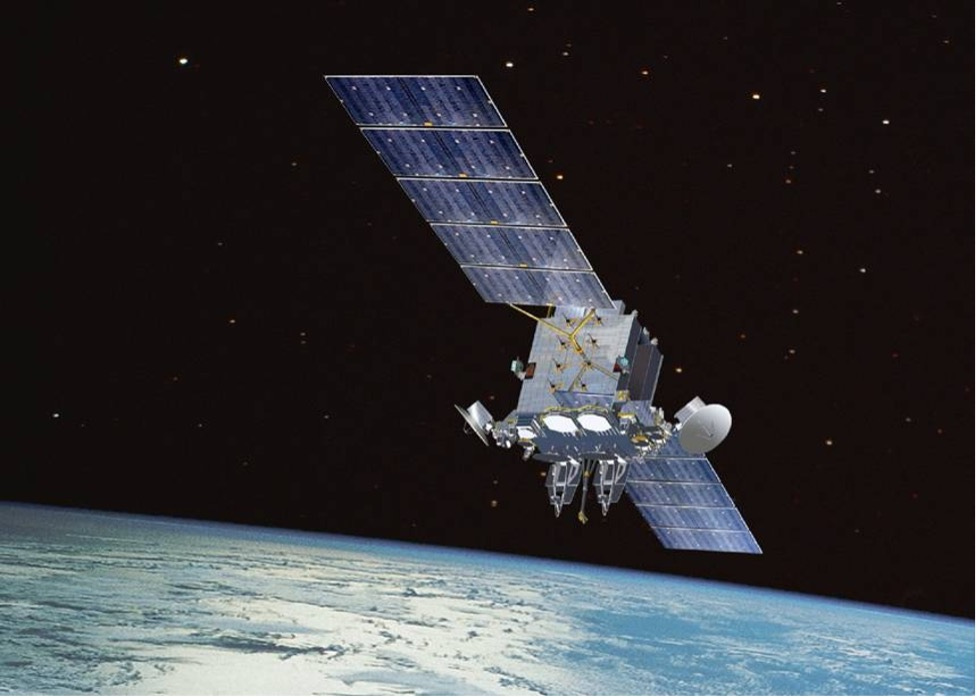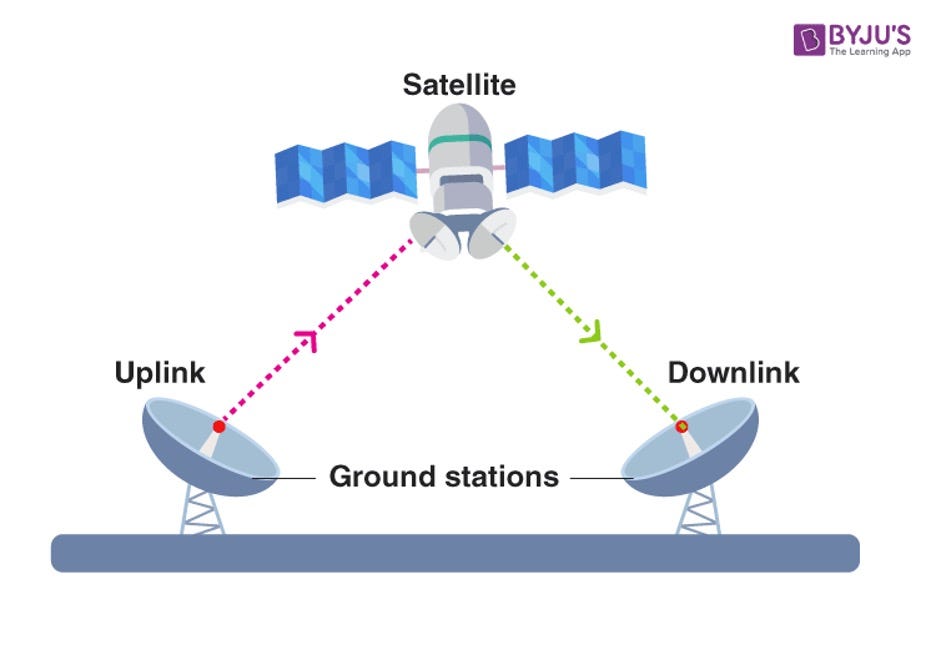In Part 1 and Part 2 of our series on satellites we covered what satellites do, why they’re so helpful, and how they get to their spot in the sky. Now that they’re there what happens? Do they just do nothing? Allow their speed to carry them around the Earth forever? Mostly yes, but there’s a bit more to it than you might think. Satellites need to face the right direction, continuously adjust their orbit, and most importantly, stay in constant communication with Earth. Today we’ll discover what it’s like to be in space for that long and why it’s not as boring as you might think.
To recap how we got to space, we put our satellite on a rocket and that rocket brought the satellite 300 miles above the surface of the Earth. The satellite speeds around in its orbit at upwards of 15,000 mph.
Let’s start by understanding how these satellites stay ~woke~, or, powered. The two most common methods are solar panels and RTGs (radioisotope thermoelectric generator). Oftentimes, they’ll use a combination of the two. Solar panels work in space the same way they work here on Earth, just better. Since satellites are largely outside of the atmosphere, the Sun’s radiation is much more intense for them. As a result, they get a lot more solar energy than our solar panels here on the surface. This is a pretty good way to generate power, but it doesn’t do much good when the satellite is on the dark side of the Earth. They have plenty of batteries to store solar energy, but if engineers deem that not enough, they’ll also have these RTGs.
I’ll admit, radioisotope thermoelectric generator sounds pretty crazy, but it’s just a fancy name for a simple concept. Essentially, you take a radioactive metal (in this case, usually Plutonium) and let it sit there. As the Plutonium decays, it releases a LOT of heat. RTGs take the heat and convert it directly to electricity with thermocouples. Thermocouples generate electricity when exposed to a temperature differential (one side is very hot and the other is very cold). This is perfect for satellites: radioactive metal is very hot, and space is very, very cold. RTGs sound awesome, and they are, but they’re not efficient enough to be used for anything more than low power applications. Also, the radioactive metal doesn’t make it very human-friendly either. Between solar panels and RTGs, satellites produce enough electricity to power their antennae, onboard computers, and much more.
Now that our science box is powered, how does it move? It’s in space, so it can’t use that electricity to spin a little propeller. And it can’t use moveable wings to change its orientation like a plane would. It has to use rockets. Literally. Satellites carry fuel to use for course corrections. If, for example, their antenna is pointed in the wrong direction, they can fire one of 6 to 8 thrusters to spin themselves into position. This doesn’t happen quickly; these maneuvers can take hours to turn the satellite 180 degrees. Satellites also use these thrusters to stay in orbit. While they’re far off the Earth’s surface, there is still a tiny bit of air up there. Not enough for them to be greatly impacted, but enough to slow them down over several months. So over time their speed will decrease, and their orbits will change because of it. To combat this, they use their thrusters to speed back up, so they stay where they need to be in orbit.
So, they can stay powered and stay on the right course. But what do they actually do? Most satellites are specifically for communication, and all satellites need to communicate in some form. They communicate using radio waves with stations like this one: [1]
These satellite dishes on Earth are massive because they need to receive data from multiple satellites at the same time. Satellites also have pretty small antennae because size is a huge limiting factor when going to space, so we need to bump up the size of the ones on Earth to get the faint signals they’re sending us. The dishes on the satellites look something like this: [2]
With these massive dishes and computationally and physically complex satellites, all we’re really doing is one thing: transmitting data from one place to another. Usually, if the source and the recipient of data are close enough (not blocked by the curvature of the Earth), then the data would be beamed directly. But most of the time that’s not the case. When you call someone on the other side of the country, or when you’re watching a sports game that’s taking place on the other side of the world, that information can’t go straight from point A to point B. It needs a middleman. In this case the information shoots from the source to a satellite, which has a much wider field of view, and then on to the recipient. [3]
And if the downlink site is far enough away the information will be transferred between multiple satellites and even extra ground stations. So next time your phone is being laggy, give it a second—it’s going to space. Nonetheless, all the satellite is really doing is receiving data, processing where it needs to go, and sending it back out. Just like a cell tower that’s in orb… never mind.
Beyond this, space IS pretty boring. Satellites constantly make decisions and send data from one part of the world to another, but if you were up there with it, you’d pull out your phone and start scrolling through Instagram real quick. Good news is, you’d be right next to the satellite that’s bringing your favorite influencer’s keto tips straight to your iPhone.
I hope you enjoyed our third of four editions on satellites. Next time we’ll learn what we do with satellites when they die. Pretty morbid, right? Yeah I’m excited too. Thanks for reading!
Special thanks to Joe Lovinger for edits.
For more details…
[1] https://www.everythingrf.com/News/details/4461-Satellite-Antenna-Market-Worth-2-99-Billion-by-2022








Matthew, am so happy that brilliant people like you are working on moving us forward. And I promise I will be more patient with my phone.